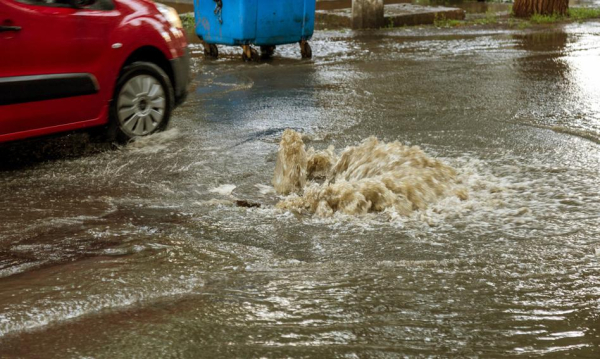Lawns located lower down the roadway and front gardens in front of buildings would absorb a lot of water during heavy rains, Prof. Bogumiła Rouba told PAP. The expert pointed out that we are currently building roads that are rivers, and all safety in the event of heavy rain relies on the capacity of the drainage pipes.

– We can only achieve success where we know how to combine modernity and knowledge with the wisdom of tradition – said Rouba, chairwoman of the Monument Protection Council at the Minister of Culture and National Heritage, in an interview with PAP. She deeply regrets that road designers do not use the wisdom of previous generations.
The expert pointed out that roads were once built in two formulas – a convex hump road or a concave gutter road (especially in the mountains).
“Roman arched roads are still in Sicily. I've seen them in many cities around the Mediterranean. They're well-preserved old roads that function remarkably well. Today, we mostly build roads that are flat or have very slight slopes. Our entire safety depends on the capacity of the canals that are designed to collect and carry away the water,” said Professor Rouba.
She added that the surface shouldn't be turned into a river. “Usually, flat surfaces are surrounded by high curbs. In that case, everything depends on the capacity of the drainage pipes. If we incorporated curbs into the slightly bulging, arched surface, which don't act as a barrier, and placed the lawn lower rather than higher, each lawn would absorb enormous amounts of water. There wouldn't be so much damage to the surface, drivers, and pedestrians,” the expert said.
Prof. Rouba emphasized that she does not know and does not fully understand what motivates road designers to cause “such suffering” to people.

“There's a plaque on the Toruń Friends' Society building announcing the renovation. Of course, a hard surface has been applied right up to the walls, which immediately creates a spray effect. Hundreds of liters of water are being dumped on the ground floor of the building. This water is rapidly destroying what was built at such great expense,” said the heritage conservation expert.
She admitted that sidewalks have been widened since the 19th-century modernization of cities. “This widening of sidewalks, bringing them right up to the walls, caused problems with splash water. Previously, tenement houses were resistant because they had so-called front gardens. Currently, in Toruń, there are a few of them preserved on Mickiewicza Street,” said Professor Rouba, who has been associated with Nicolaus Copernicus University in Toruń for years.
The front gardens, she pointed out, served as a buffer zone where vegetation “drank up” rainwater. “The grass near the ground floor of the building protected it from splashing,” she added.
She emphasized that she had been very interested in seeing modern roads in Georgia, but also in Scandinavia, including Oslo, Norway.
“I recently saw a market square there that had been resurfaced. A five-centimeter gap was left between the standard, modern, laser-cut tiles. This doesn't impede the movement of people with disabilities; accessibility requirements are met, but such a gap is also important in rain, as water immediately seeps through,” explained Professor Rouba.
Tomasz Więcławski (PAP)
twi/ dki/






